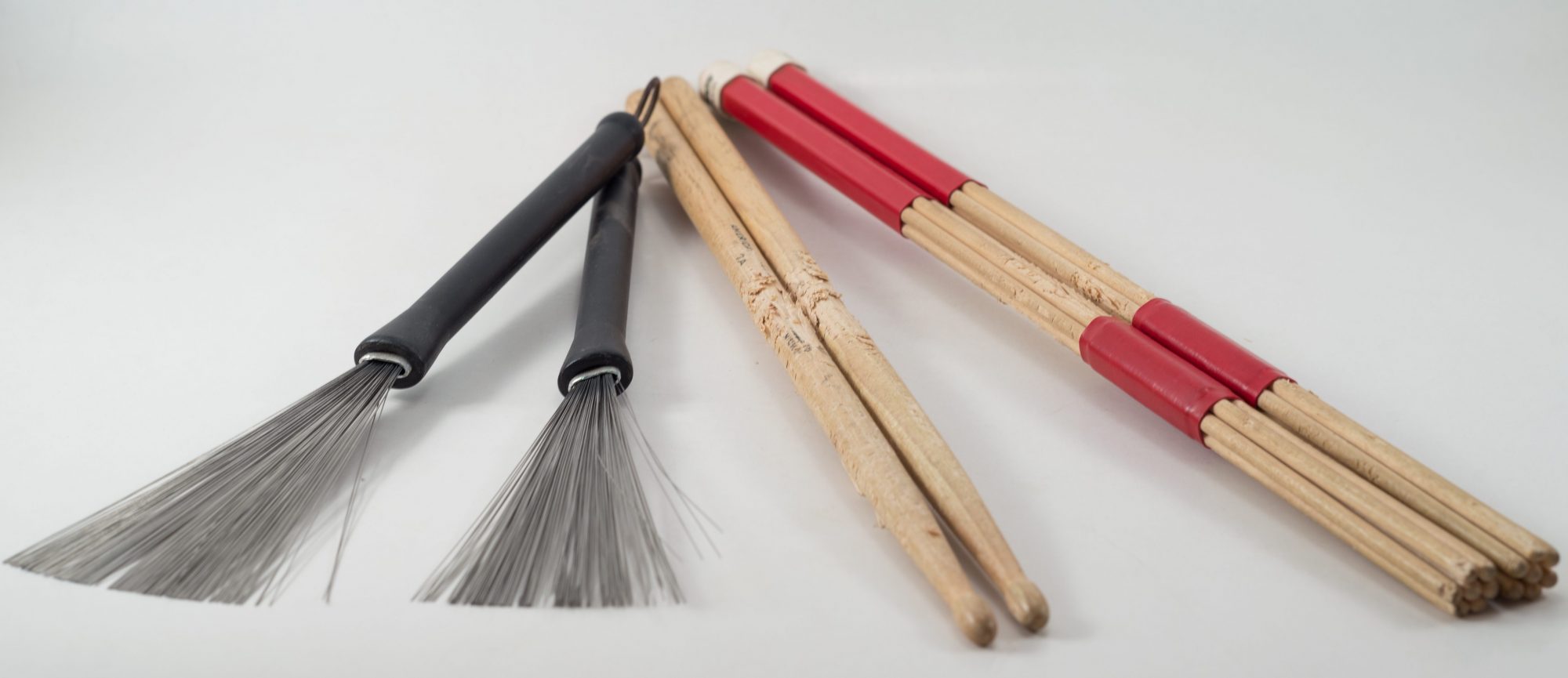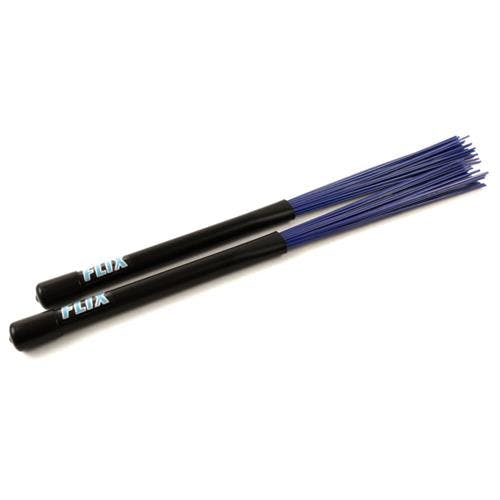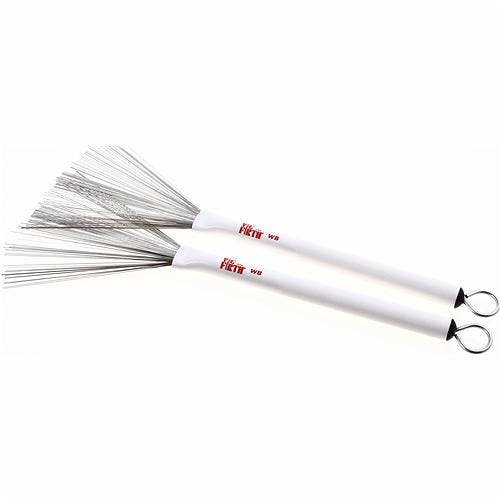When picking up drum brushes, you enter a world completely different to that of regular wooden sticks. From new techniques to the diversity amongst the brushes themselves, they can be used for far more than just playing quietly.
Types of brushes
Wires
Most common are metal wires. They make for a bright snappy sound when hitting the drum and a crisp and present swish when sweeping across the head. One variation on the traditional brush design is the Steve Gadd signature drum brush from Vic Firth. These are standard metal wires but their tip is bent upward slightly. This puts a greater surface area of the wire in contact with the head making for a smoother, fuller swish sound and less chance of the tip of the brush getting caught on the head of the drum. Another variation are the Vic First Live Wires which have small beads on the tip of each wire to create a snappy sound on both drums and cymbals.
More recently brushes with plastic or nylon wires have made an appearance. Their sound is noticeably more subdued, duller and warmer when sweeping, and when striking the drum more plasticky (obviously). The plastic brushes are also bendier and so get “left behind” more when sweeping. However they readily spring back into shape so are less likely than wire brushes to be permanently bent.
Retractable Or Fixed
Retractable brushes have a metal rod at the rear of the stick that can pull the wires back inside the handle. This is useful as by changing precisely how far out the wires are you can alter the spread of the fan, how closely grouped the wires are, and allow for different playing styles and sounds. Over time the moving parts in the retractable brushes can get jammed and damage the wires, so in this sense the fixed brushes can last a little longer. However as the fixed wires can’t be hidden away for storage you need to be very careful not to bend them, easily done in a busy stick bag.
Handles
Though the handle of the brush doesn’t greatly affect its sound, it does change how they feel to play. The most common types are rubber, plastic, wood and aluminium. The rubber handles are usually slightly soft to the touch and very grippy. The others generally move around in your hand more freely and to my taste are more natural to play. The choice however is purely down to what feels best for you.

Heads
To go with those brushes it’s important to choose the right heads. First off they are going to have to be coated as it is the friction of the coating against the wires that creates the characteristic swish sound. Even better than plain coated is the Remo Fiberskyn range, a synthetic simulation of traditional calfskin drum heads. Their surface offers a little less friction than traditional coated heads but that makes for a smoother and warmer swish sound, perfect for playing with brushes.
Books
Ed Thigpen’s book “The Sound Of Brushes” is invaluable and just about the only material you need when starting to learn brushed. It overcomes the difficulty of brush notation by presenting full-page diagrams of the movement and counting for each groove/exercise. You are even encouraged to play on top of the diagrams in the book before moving to your snare. Along with traditional Jazz patterns it details ways bushes can be applied to other forms of music such as R’n’B, Latin, and Rock.
Techniques
Aside from the standard sweeping and tapping techniques there are a few other ways to use brushed.
First off you’ll notice that when you leave a brush in contact with the head it will muffle the drum. With this in mind you can mute and un-mute the ringing of the drum with one hand whilst playing patterns with the other. This can be very tricky to get right at first because of the independence involved, but with practice you can get some really cool, almost melodic effects.
A double-edged sword!
You can also use the metal rod that retracts the wires to play the kit. Dragging the tip along the surface of a cymbal makes a nice bright scraping sound, great for accents. These rods can also be used to play the rims of the drums to create pleasing clicking sounds, like the amplified ticking of a clock.
As drum brushes are an often overlooked area of drumming there is still so much room left for exploring their possibilities. So while you are still keeping time brushes demand you treat the drums differently, exactly how you do this is up to you.







Responses & Questions